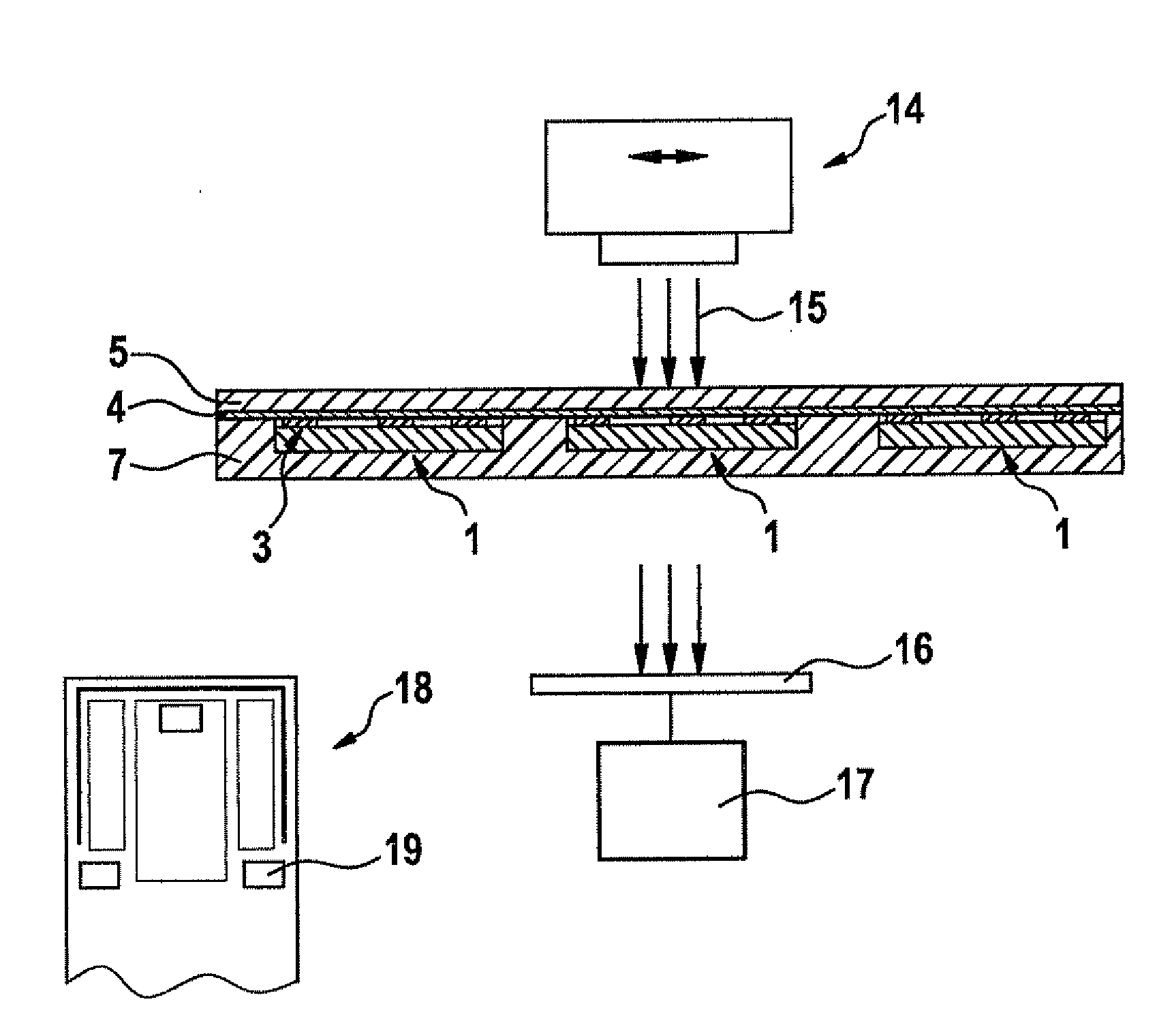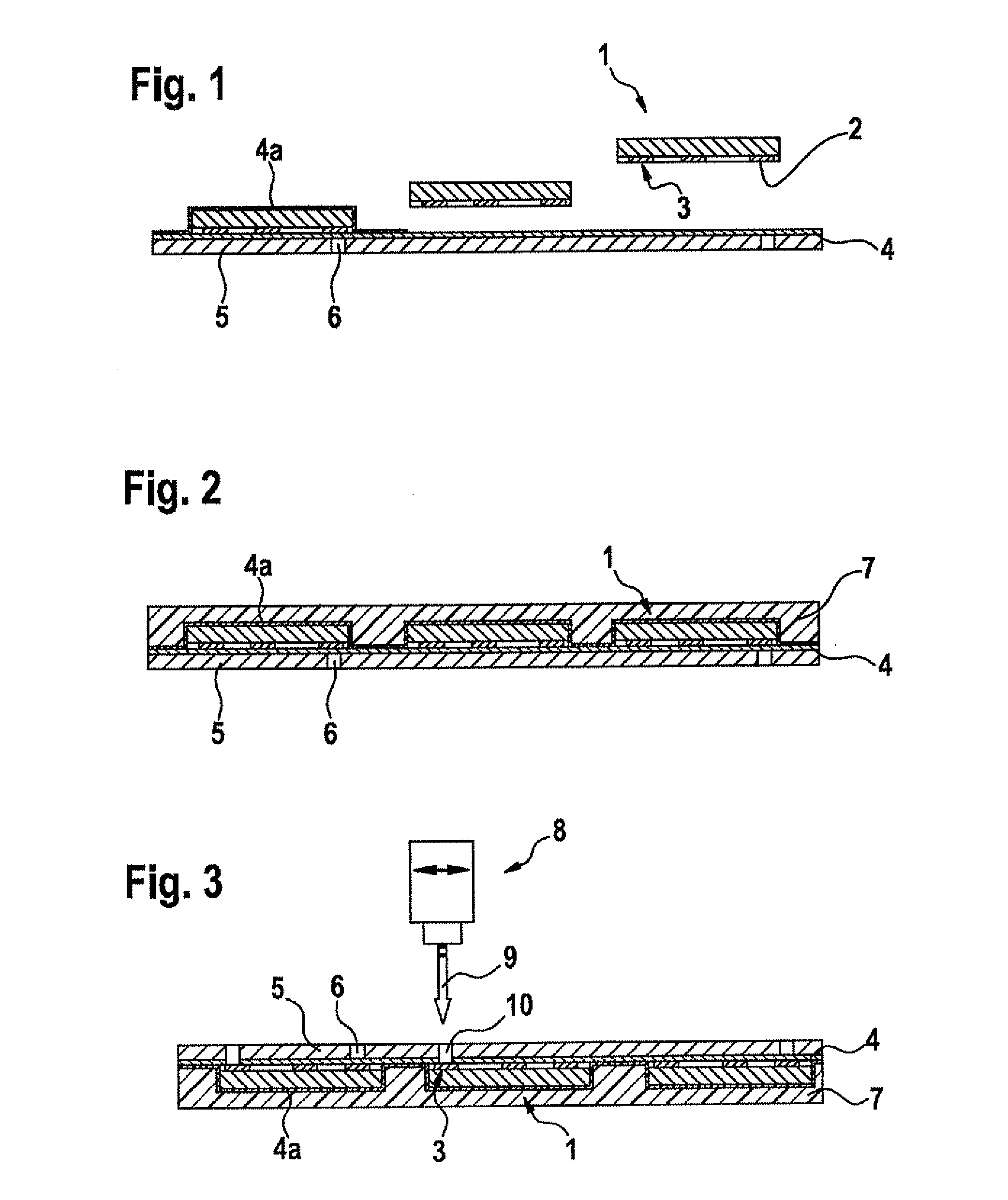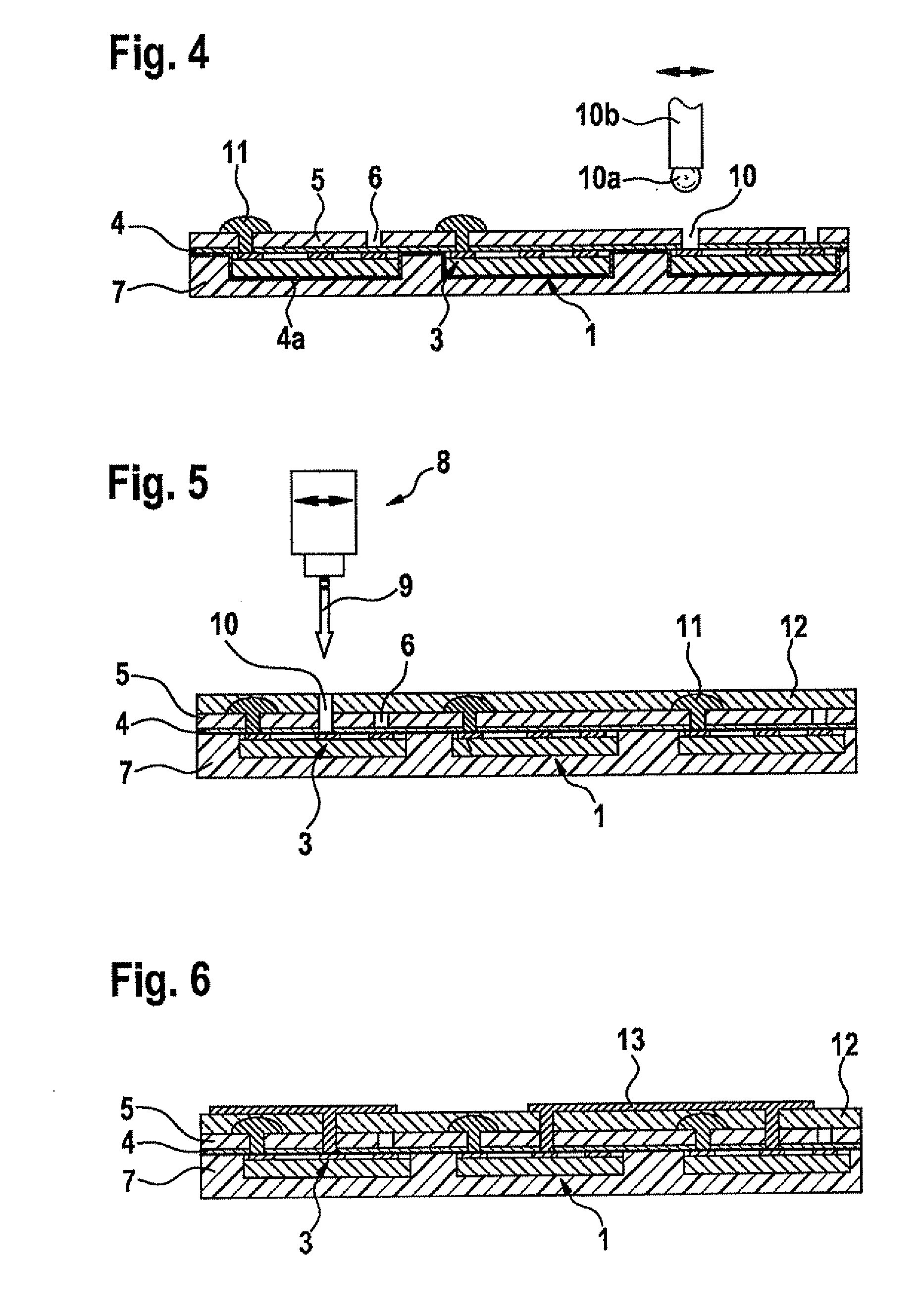Method for producing a photovoltaic module having backside-contacted semiconductor cells, and photovoltaic module
a photovoltaic module and semiconductor technology, applied in the field of photovoltaic modules with backside contact semiconductor cells, can solve the problems of hammering an efficient large-scale production of such modules, and achieve the effect of achieving good manufacturing tolerances
- Summary
- Abstract
- Description
- Claims
- Application Information
AI Technical Summary
Benefits of technology
Problems solved by technology
Method used
Image
Examples
Embodiment Construction
[0030]FIG. 1 shows a placement step for semiconductor cells on a substrate. Semiconductor cells 1 shown here are developed as crystalline photovoltaic cells, for instance. They are made of silicon or a comparable semiconductor material and include the doped regions (not shown here in detail) for the energy conversion of solar energy into electrical voltage. Each semiconductor cell has a contact side 2 which features contact regions 3 disposed thereon. The contact regions usually are galvanically metallized. A placement device, which is not shown here, is normally used for the placement.
[0031]A substrate 4 is provided for the backside contacting of the semiconductor cells and, in particular, their contact sides 2. This substrate is made of a foil-type, electrically insulating material or a laminate of electrically non-conductive foils. The fixation of the semiconductor cells on the substrate is accomplished by means of a plastic foil 4a. This foil is made of, for example, ethylene vi...
PUM
 Login to View More
Login to View More Abstract
Description
Claims
Application Information
 Login to View More
Login to View More - R&D
- Intellectual Property
- Life Sciences
- Materials
- Tech Scout
- Unparalleled Data Quality
- Higher Quality Content
- 60% Fewer Hallucinations
Browse by: Latest US Patents, China's latest patents, Technical Efficacy Thesaurus, Application Domain, Technology Topic, Popular Technical Reports.
© 2025 PatSnap. All rights reserved.Legal|Privacy policy|Modern Slavery Act Transparency Statement|Sitemap|About US| Contact US: help@patsnap.com



